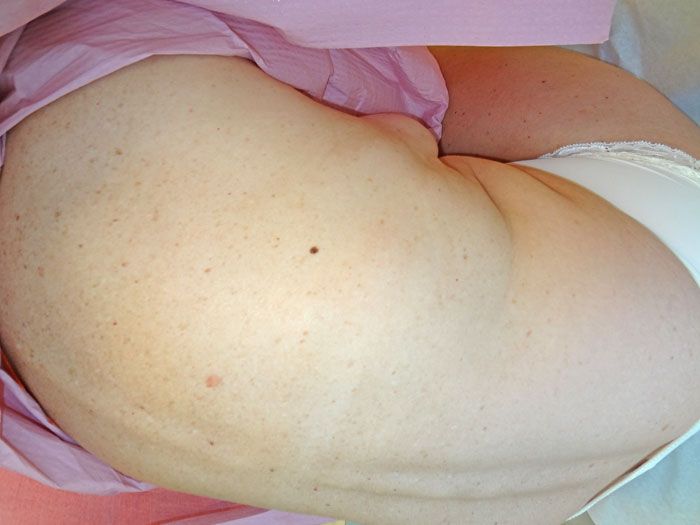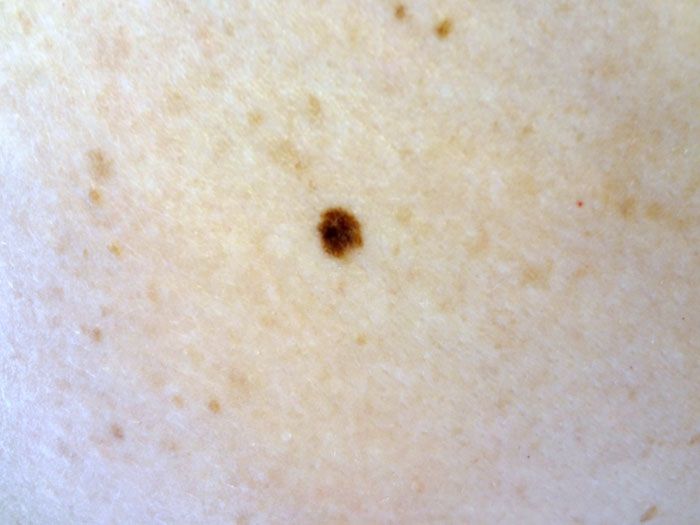Atypical Nevus
This pigmented macule clearly stands out against a bland background of fair-complected skin. This is known as the “ugly duckling” sign. Such lesions should always be viewed with suspicion and a biopsy is generally indicated.


A 44-year-old woman sought medical attention because of the new appearance of a “dark” but asymptomatic lesion located on the right flank.
Key point: This pigmented macule clearly stands out against a bland background of fair-complected skin. This is what is known as the “ugly duckling” sign. Such lesions should always be viewed with suspicion.
Treatment: Conservative excision revealed this lesion to be a moderately atypical nevus. No further treatment was entertained.
Note: A biopsy is more often than not indicated for all such lesions. Smaller lesions are best excised with a narrow margin (2 mm). Wide repeated excision would subsequently be performed if severe atypia or overt melanoma were found on histopathology.